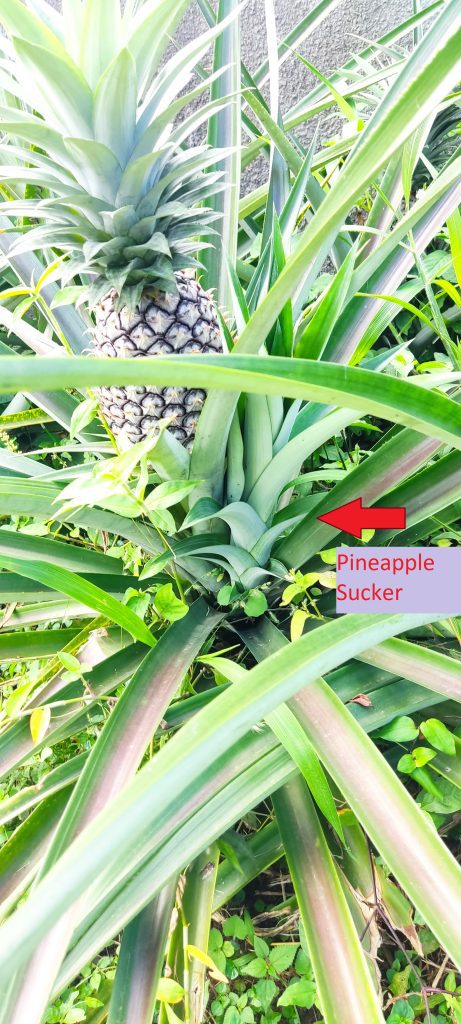To know how to grow pineapple from suckers, a guide is essential and that is exactly what this article is for.
We have written some articles on different ways to grow pineapple, such as: how to grow pineapple from top and how to grow pineapple from slips.
This time, we want to learn how to grow pineapple from suckers.
It is also important that they obtain high-quality pineapple suckers from producing plants.
This is because this type of sucker has a higher tendency for rapid growth, early fruiting, high yielding, and a stronger level of disease resistance potential.
What is a pineapple Sucker?
A pineapple sucker is identified by a lateral shoot or pup that develops from the rhizome and emerges in between the leaves of a pineapple plant.
There are two other types of pups, one is called “ratoon” which grows from the base of the root of the plant at a certain distance away from the plant, and the other is called “Slip” which grows on the stalk of the pineapple fruit.
The pineapple sucker is very valuable in pineapple propagation, since a pineapple plant flowers once and produces a pineapple, and dies.
Pineapple must produce at least a sucker before it dies. Some variety of Pineapple produces more suckers than others. Some varieties also produce suckers earlier than others.
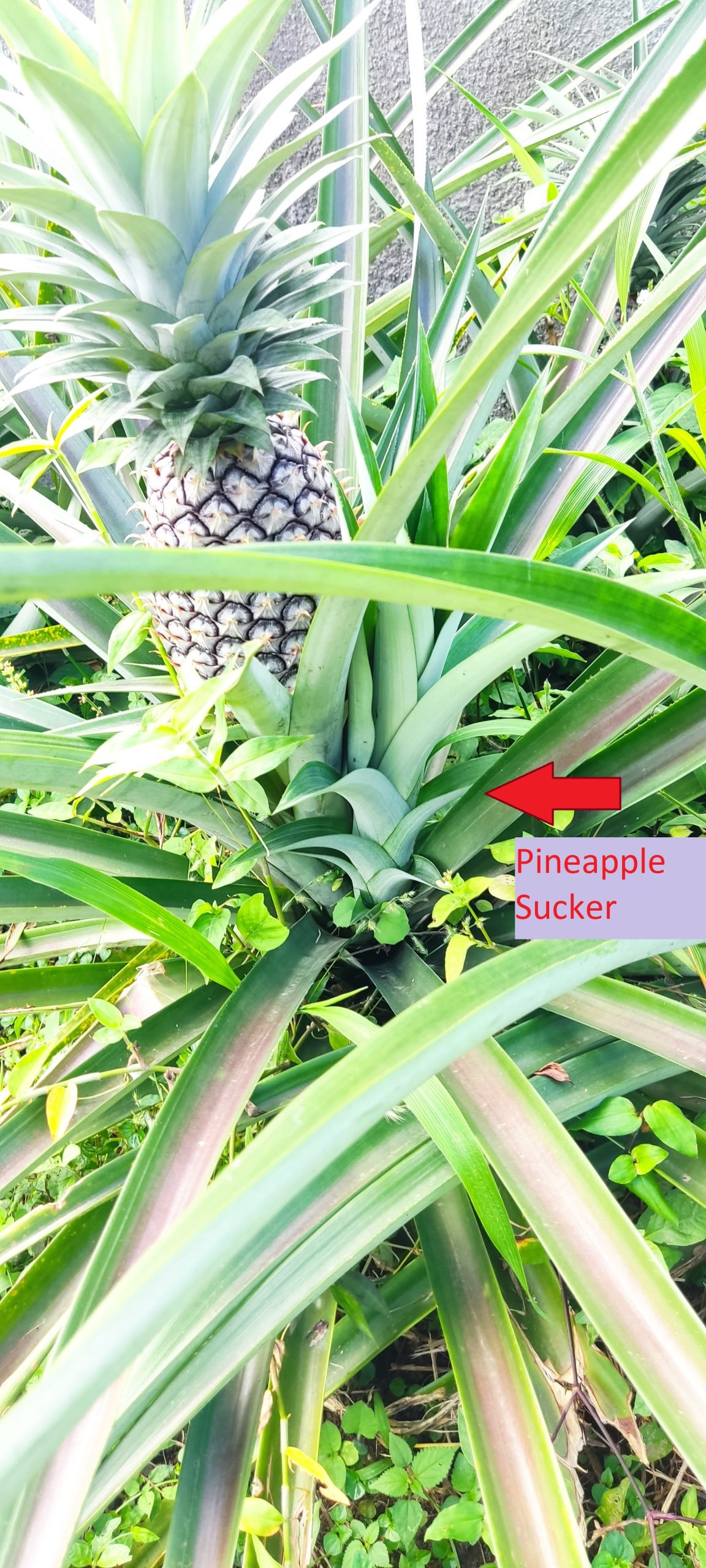
When to pluck Sucker from Pineapple
When to pluck a pineapple sucker depends on the time in the plant’s life cycle it began to form and its size.
If it appears before or during when your pineapple flowers and bears fruit, it may be wise to pluck it a few weeks after your fruit begins to grow.
This is to ensure it does not compete with the fruit for nutrients resulting in a smaller fruit size. Also, as a sucker becomes bigger, if it is close to the fruit, it may cause the fruit to fall. You can pluck the sucker from when it is 6 inches long and plant somewhere else.
If a sucker appears after your fruit is almost ready for harvest or after harvest, you can leave it to grow on the plant to reach a good height before plucking it for planting. This will shorten the time it takes for the sucker to fruit.
How to pluck Suckers from Pineapple Plants
Hold them close to the base as much as you can.
Then, twist and pull at the same time, it’ll come off easily and undamaged.
The Pineapple sucker just like other pineapple pups tends to fruit quicker than pineapple to tops. They will fruit within 1 year of planting.
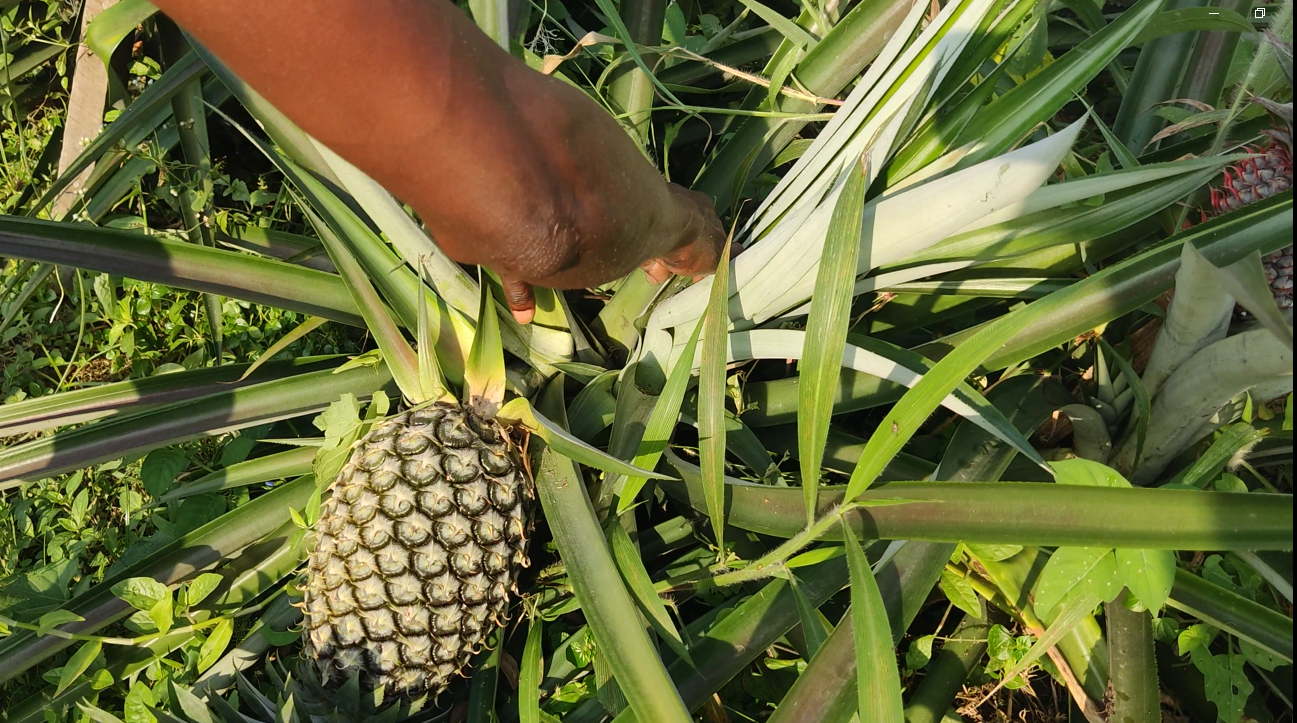
How to Plant Pineapple Sucker
Make a small hole in the ground or planting pot, just enough to fit the base of the sucker. The base of the sucker is where the roots will form, so stick that end into the hole.
Cover it with some earth just enough to keep it firmly rooted in the ground, that is, around the base so the sucker stands straight and doesn’t tilt.
If the soil is dry be sure to have prepared it in advance and give it some water.
General Pineapple planting conditions
An article on how to grow a pineapple from suckers will be incomplete without the requirements to boost good pineapple growth.
Below are what you need:
A Temperature Range that falls between 65°F – 95 °F.
Rainfall of about 60 cm/year (at regular intervals throughout the growing season).
Soil Type: Well-drained and acidic soil (4.5-5.5 pH).
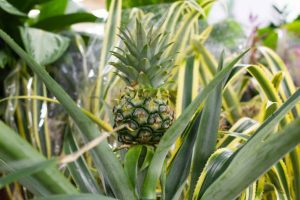
Green little pineapple fruit of an exotic Bromelia ananas on a bush harvest
Soil Fertility
Generally, pineapple does not require a lot of fertility to grow which is why it still thrives well under not-so-ideal soil conditions. However, soil fertility affects the size and composition of the fruit produced, so there is a need to improve the soil to ensure that you have a high-quality fruit in the end.
You can introduce animal manures and compost before and after planting your sucker to ensure better growth and fruit size and quality.
Irrigation and Weed Control:
Pineapple is a very hardy plant and can survive in arid conditions. However, periodic watering helps to improve plant growth and yield. The plant needs water most in dry seasons and during flowering periods but for the most
It is best to mulch around the pineapple plant to control weeds and minimize water evaporation.
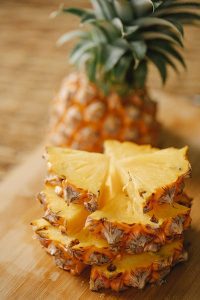
Pests and Diseases of Pineapples
Like every other crop, pineapple plants are susceptible to diseases and pests.
Nematodes are a common problem with this fruit so it is necessary to control it.
Mealy bugs are also a common pest with this plant, it causes wilting of pineapple leaves and you should use spray organic pesticides to control them.
Other diseases and pests of the pineapple plants include scale insects, thrips, bud moths, fruit borer, midgets, fruit flies, white grubs, beetles, weevils, and termites.
Conclusion
To sum it up, growing pineapples from suckers is both fun and simple. It gives you the thrill of gardening and the pleasure of eating a fruit you grow yourself.
Stick to this guide, take care of your plant and you’ll have new pineapples growing from suckers in no time.
